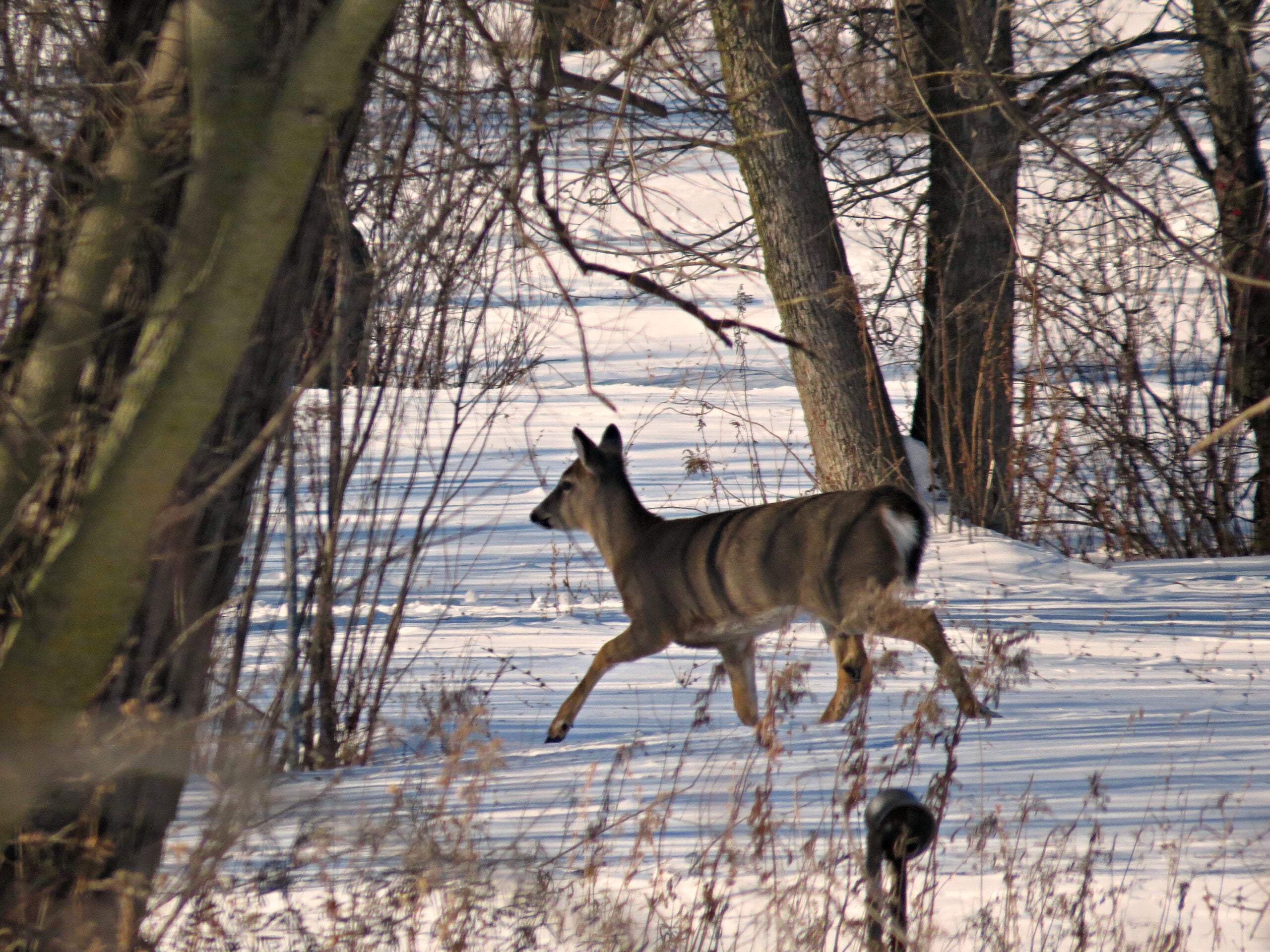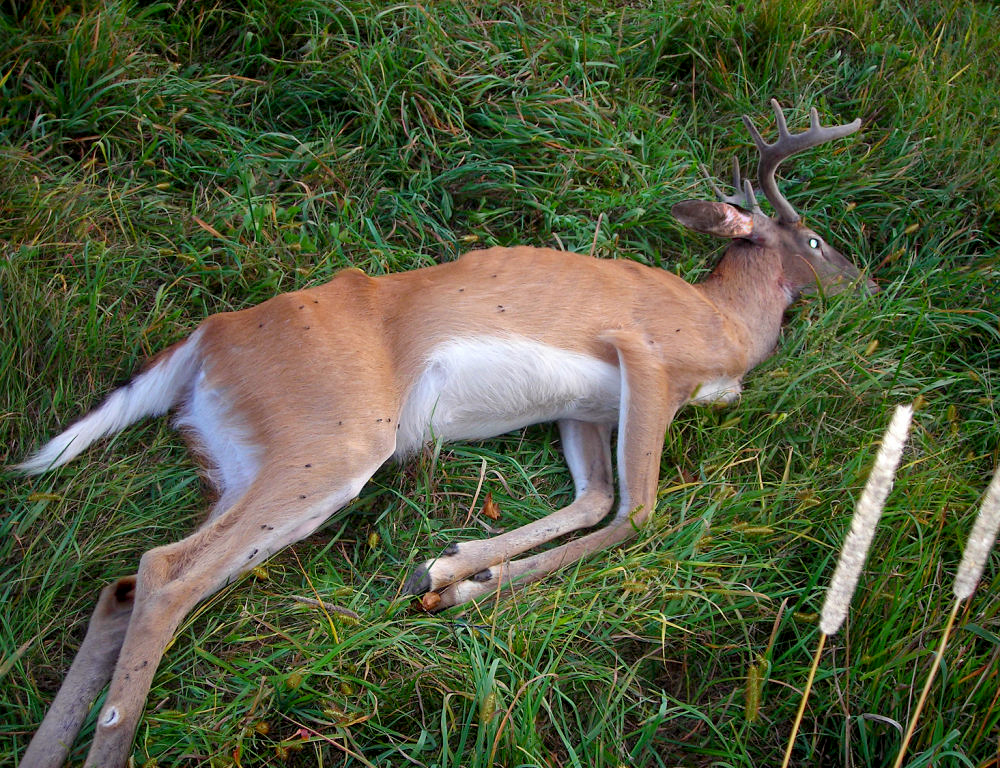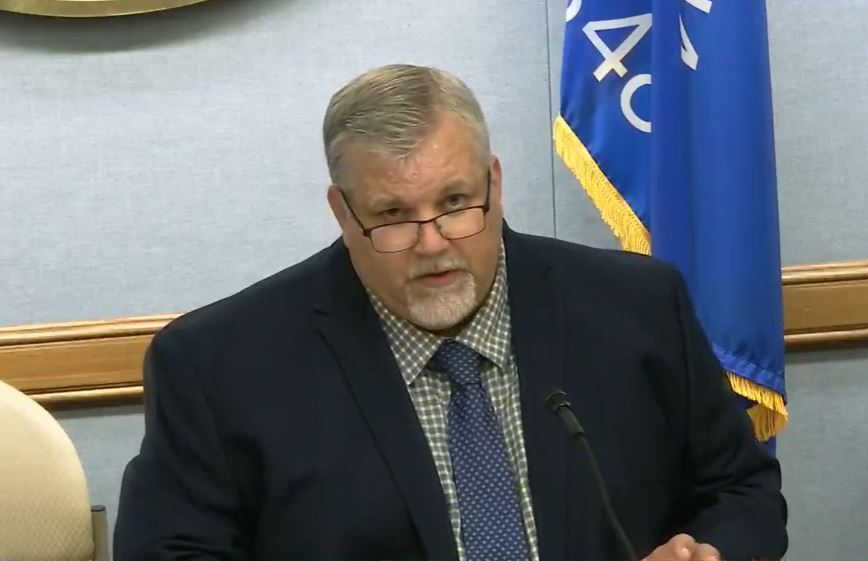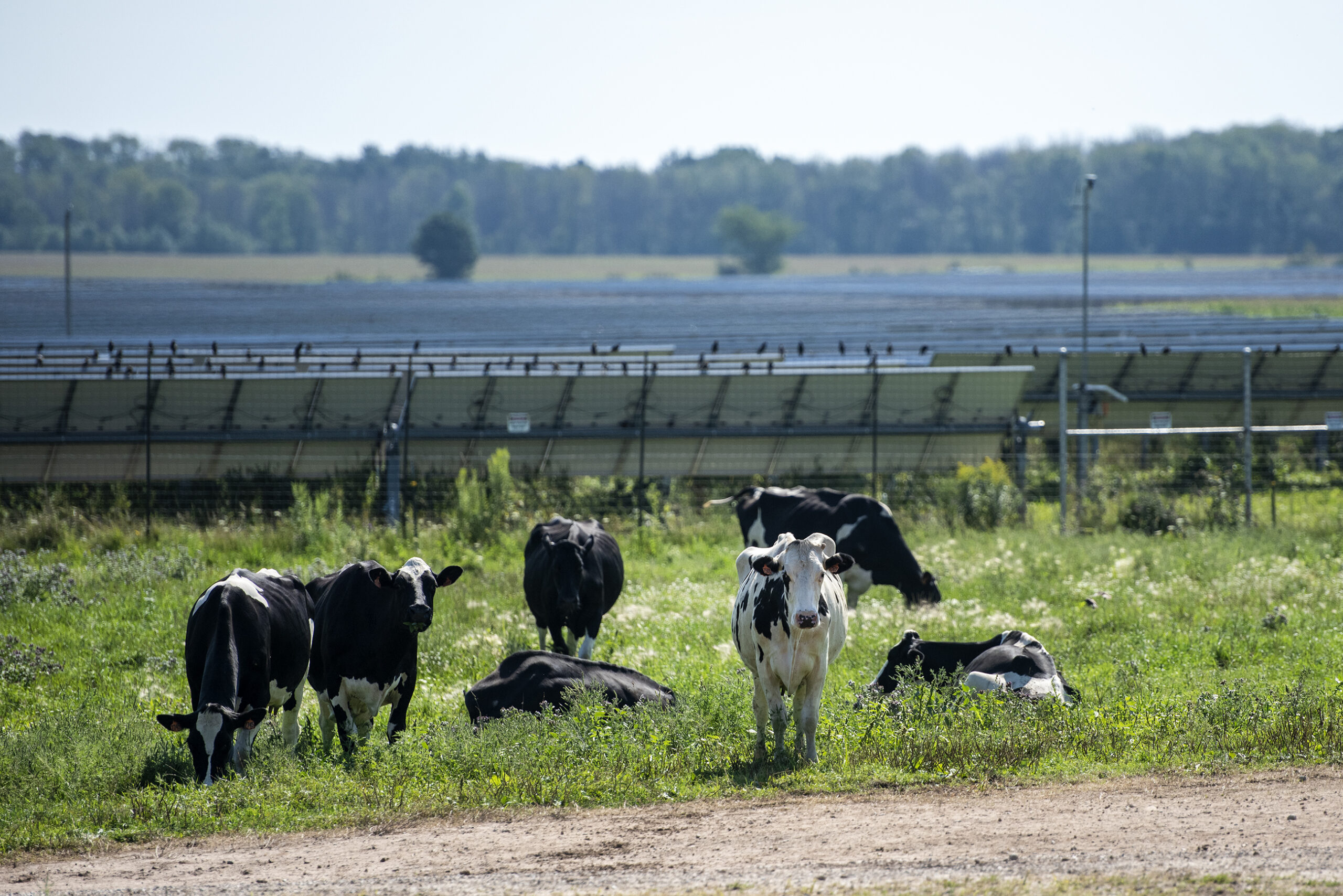Wisconsin natural resources and agriculture officials say they’ll start from scratch on regulations to slow the spread of chronic wasting disease between wild and captive deer after emergency rules proposed by former Gov. Scott Walker last year were scrapped or allowed to expire.
But while the state Department of Natural Resources and state Department of Agriculture, Trade and Consumer Protection say they’ll work together on a new set of policies for the deer farming industry, conservation groups worry starting fresh could delay CWD efforts by up to two years.
In May, Walker directed the the DNR and DATCP to draft emergency rules to limit the spread of CWD, saying the state needed to be more aggressive in its response to the fatal brain disease.
News with a little more humanity
WPR’s “Wisconsin Today” newsletter keeps you connected to the state you love without feeling overwhelmed. No paywall. No agenda. No corporate filter.
From DATCP, Walker asked for rules requiring a second 8-foot-high fence around the state’s 376 deer farms or three strands of electric wire in addition to any existing fencing. He also asked for a rule limiting the movement of live deer from breeding farms and hunting ranches in counties listed by the DNR as CWD-affected.
Walker ordered the DNR to draft an emergency rule package that included similar fencing regulations and a new rule banning hunters from moving deer carcass out of counties listed as CWD-affected.
Those rules have since been dismantled. The rule on carcass transport was scrapped before it was enacted by a Republican-led rules committee in the state Legislature on Oct. 1, the same day the rule was to take effect. Committee members argued the rule would be confusing for hunters, with one Republican calling the emergency rules a political stunt.
The DNR did write an emergency deer farm fencing rule but the citizen board that oversees the DNR amended it, giving deer farmers 365 days to comply with the rule. That amendment was significant because emergency rules expire within 150 days. The DNR’s fencing rule expired Feb. 27, 2019. The DNR could have extended it by up to another 120 days but wildlife regulation policy specialist Scott Karel said a decision was made to let it expire.
“When we were considering whether to extend this or not, we decided to ultimately take a step back and take a more holistic approach to fighting chronic wasting disease,” said Karel.
Karel said this doesn’t mean the DNR is letting the issue go. Rather, he said the DNR will be coordinating with DATCP on new rules for the deer farming industry.
“I wouldn’t call it pulling back. I think what we’re trying to do is reassess how we move forward. I think fencing will be, potentially, a part of any new rule package,” said Karel. “It’s something we’re discussing but I can’t say what would be part of it since we’re in preliminary stages.”
After Walker called on DATCP to write emergency rules last year, the citizen board that oversees that agency voted to take no action on Walker’s recommendation. Instead rules limiting live deer movement and requiring additional fencing were included in a broader permanent rule package, which faced stiff opposition from the deer farming industry. DATCP has since removed those deer farm regulations from its broader rule package.
An email from DATCP spokeswoman Leeann Duwe said the department will focus on deer farming regulations separately.
“Yes, DATCP is moving (the rule package) forward without the enhanced fencing components included for final promulgation,” wrote Duwe. “The rule package that the enhanced fencing requirements were included in has a large number of other rule changes that affect other entities besides farm-raised deer keepers. Those rule changes have been in the works since 2017. A new scope will directly address farm-raised deer rules and focus specifically on the farm-raised deer keeper program.”
According to DATCP, it will be working with the DNR on the new deer farm specific rules and will begin the process by the end of March. But George Meyer, former DNR secretary and current executive director of the Wisconsin Wildlife Federation, told WPR that restarting the rule-making process will cause unnecessary delays.
“We’ve worked over two years on these rules and it looks like we’re going back to scratch,” Meyer said. “The result is it’s going to be another two years before we’ll be able to get any rules into place and meanwhile CWD continues to spread in the state.”
He said the move was a blow to CWD efforts in Wisconsin.
“It is extremely disappointing that, at this stage, neither agency is going forward,” Meyer said.
The state’s deer farm lobbying group, Whitetails of Wisconsin, has opposed rules requiring additional fencing and limitations on live deer movement, saying they would be ineffective at stopping CWD, too expensive and likely put deer farms out of business.
But Whitetails of Wisconsin Vice President Laurie Seale said the actions by the DNR and DATCP don’t mean new regulations won’t happen.
“They did let the emergency rule expire, however, that doesn’t mean that we’re out of the woods,” Seale said . “Once they get the new state veterinarian in place and the new administration has a chance to review, I’m sure we’re going to go back to the table and hopefully they’ll sit down at the table with us and we can discuss it and come up with a plan.”
Seale said even after an emergency rule was approved by the DNR, Whitetails of Wisconsin leadership told members not to start building fencing because a permanent rule could have looked different than the emergency rules. She said the deer farming industry is hoping to work with DNR, DATCP and conservation groups like Wisconsin Wildlife Federation on ways to limit the spread of CWD in the state. But Seale said if additional fencing is required, the state should foot the bill.
“We are adamant that if the state wants to force double fencing, enhanced fencing, that they have to come up with the funding because we don’t look at it as a solution to CWD. It’s more just a hindrance to us,” Seale said. “It’s not going to stop the spread of CWD.”
Seale said instead state regulators should work with deer farmers in Wisconsin who are studying genetic markers that they say have shown resistance to CWD. Seale said she’s breeding for CWD resistance on her farm and is hopeful her entire herd could have the sought-after markers within five years.
Past research on genetic resistance to CWD in whitetail deer suggests while some deer do live longer than others depending on their genetic markers, the disease is still fatal for all deer that contract it.
Since the DNR began testing for CWD in Wisconsin, there have been 5,237 positives out of 226,805 sampled. There have been more than 300 CWD-positive tests at more than 24 deer farms and hunting ranches in the state. State records also show there have been hundreds of escapes from deer farms around Wisconsin since 2013.
Wisconsin Public Radio, © Copyright 2025, Board of Regents of the University of Wisconsin System and Wisconsin Educational Communications Board.





